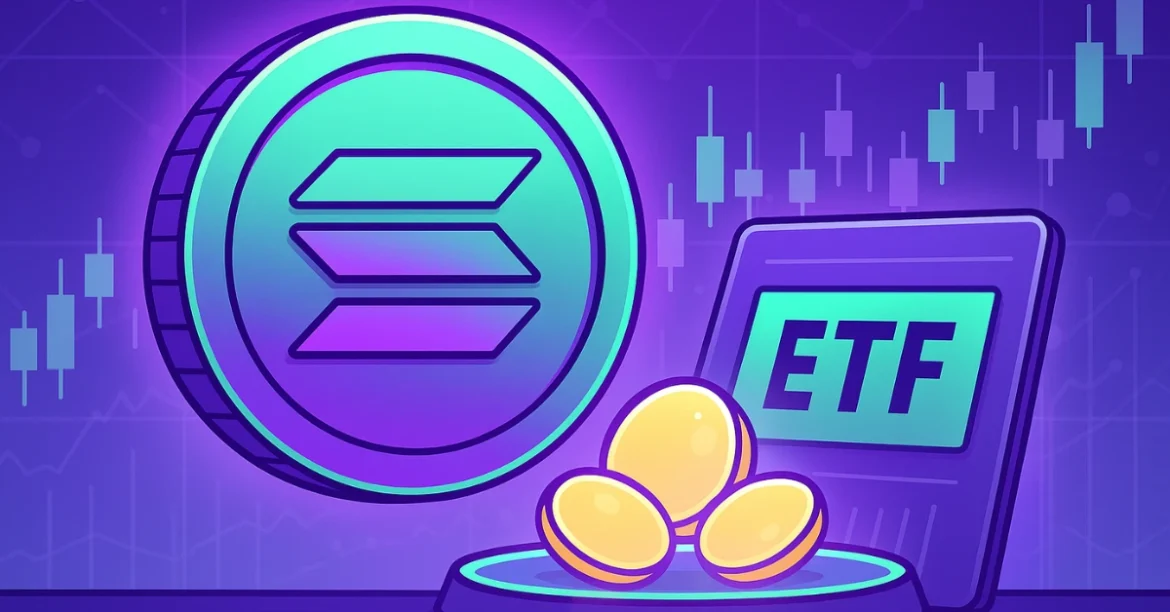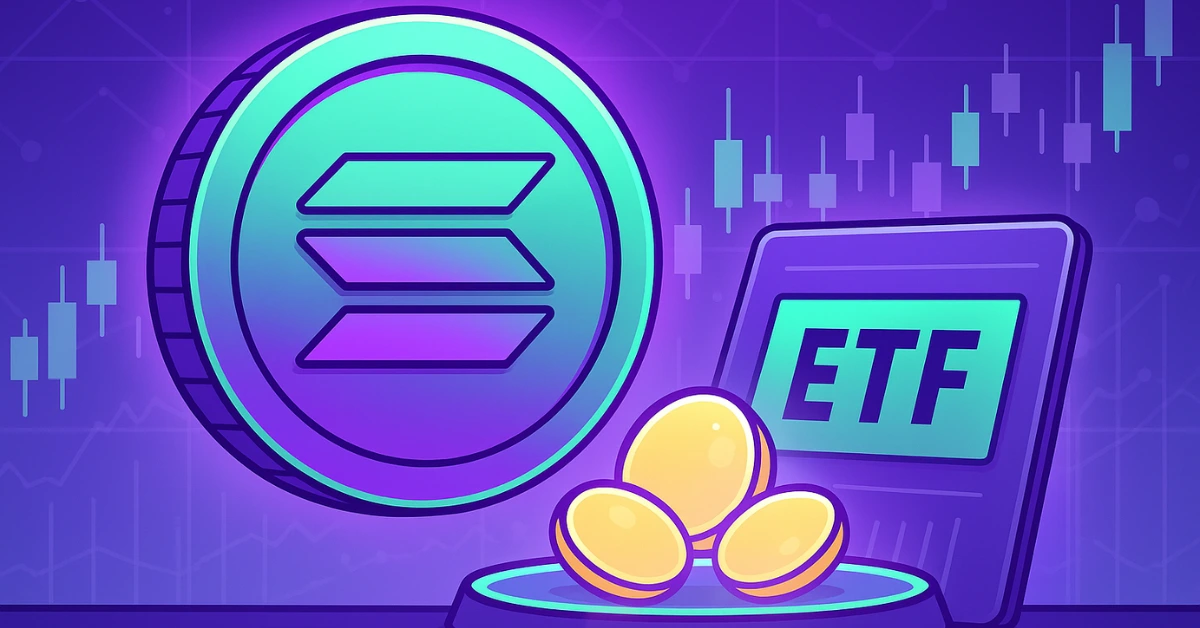The rapidly evolving landscape of cryptocurrency investment has recently marked a significant milestone with the intensified pursuit of spot Solana (SOL) exchange-traded funds (ETFs) in the United States. Multiple high-profile asset managers have been submitting amended Form S-1 filings to the U.S. Securities and Exchange Commission (SEC), signaling a collective push toward regulatory approval and broader market accessibility for Solana-based ETFs. This report provides an in-depth analysis of these developments, highlighting their implications, key stakeholders, regulatory dynamics, and potential market impacts.
The Surge in Solana ETF Filings: A Collective Momentum
Over the past few weeks, leading fund managers including Franklin Templeton, Fidelity, VanEck, Bitwise, Grayscale Investments, Canary, 21Shares, and Invesco Galaxy have either filed or updated their Form S-1 registration statements with the SEC to offer spot Solana ETFs. This flurry of filings follows a discernible pattern reminiscent of earlier Bitcoin and Ethereum ETF approvals and represents a significant step toward mainstream adoption of Solana within regulated investment frameworks.
Notably, the amendment of these filings was prompted or requested by the SEC itself, a move interpreted by many industry insiders as a positive signal toward impending approvals. The changes primarily involve compliance-related refinements and structural adjustments, such as modifications to staking features, redemption mechanisms, fee structures, and custody solutions.
Understanding Form S-1 Amendments: What SEC Seeks
The SEC’s requests have focused on enhancing the transparency and operability of the proposed ETFs. For instance, Bitwise, Canary, and Grayscale updated their filings to clarify the facilitation of staking through Coinbase Custody trust accounts, enabling investors to earn passive income from staking rewards either in Solana’s native tokens (SOL) or in fiat cash equivalents. Grayscale also amended its structure to include a 2.5% fee and notably removed staking functionality from its Solana ETF proposal, rebranding the trust as the Grayscale Solana Trust ETF to better align with regulatory expectations.
Other amendments involve specification of in-kind redemption processes—a critical feature affecting liquidity and operational efficiency—as well as delivery assurances for SOL holdings, often underpinned by partnerships with custodial giants such as Bank of New York Mellon. The SEC’s requests for these updates demonstrate an emphasis on risk management, investor protection, and clarity on fund structure.
Key Players Leading the Charge
– Franklin Templeton: Filed the S-1 form in February 2025, with the Cboe exchange subsequently submitting a Rule 19b-4 filing to list the fund, marking Franklin Templeton as one of the earliest and most prominent applicants for a spot Solana ETF.
– Fidelity and VanEck: Both submitted filings with comprehensive details on trading venues and investment objectives, with VanEck notably being the first asset manager to file for a Solana ETF, following its prior success with Bitcoin and Ethereum ETFs.
– Grayscale Investments: The well-known digital asset manager is seeking to convert its existing Solana Trust into a spot ETF. Despite removing staking elements, Grayscale’s filing underscores its commitment to offering regulated SOL exposure on NYSE Arca.
– Bitwise and Canary: Both emphasize passive income features, allowing holders to benefit from staking yield, aligning with long-term investor interests.
– 21Shares and Invesco Galaxy: New entrants filing S-1 forms, signaling a growing competitive landscape driven by institutional enthusiasm for Solana ETFs.
Regulatory Environment and Approval Outlook
The SEC has previously delayed decisions on spot cryptocurrency ETFs, citing regulatory and policy concerns. However, the recent request for filing amendments across multiple issuers suggests the regulatory body is nearing a favorable resolution. Bloomberg senior ETF analyst Eric Balchunas estimates the SEC might approve spot Solana ETFs within two to four months, with some sources speculating potential greenlighting as early as mid-2025.
This optimism is reinforced by market sentiment indicators, such as Polymarket’s prediction of a 91% probability that a Solana ETF will be approved by the end of 2025. The regulatory willingness to engage with applicants and request precise amendments, rather than outright rejection, signifies an evolving nuanced approach by the SEC to facilitate innovation while safeguarding investor interests.
Market Implications of Solana ETF Approval
Approval of spot Solana ETFs could catalyze several significant developments:
– Increased Institutional Adoption: ETFs provide a regulated, accessible mechanism for institutional and retail investors to gain exposure to SOL without directly handling digital assets, removing barriers related to custody, security, and compliance.
– Price Impact and Liquidity: Past precedents with Bitcoin and Ethereum ETFs demonstrate spot ETF approval often correlates with price appreciation and enhanced liquidity. As SOL ETF products emerge, market participation could broaden substantially, potentially stabilizing and increasing SOL’s valuation.
– Expansion of Web3 Finance: Solana’s network scalability and throughput enhancements signal its growing role in decentralized applications and Web3 infrastructure. ETFs act as bridges for traditional finance participants to engage more deeply with this ecosystem, accelerating development and mainstream adoption.
– Competitive ETF Landscape: The admission of multiple active fund managers reflects an intensifying competition that may lead to diversified ETF structures, including fee variations, staking options, and custodian partnerships, ultimately benefiting end investors through innovation and choice.
Challenges and Considerations Ahead
Despite promising signs, potential hurdles remain:
– Regulatory Scrutiny: The SEC continues to evaluate legal and policy dimensions of cryptocurrency ETFs, particularly regarding market manipulation risk, custody arrangements, and investor disclosures. Firms must maintain robust compliance frameworks.
– Staking vs. Non-Staking Products: Divergence in product design—some allowing staking rewards, others excluding them—may affect investor preference and complicate marketplace dynamics.
– Market Volatility: As with all cryptocurrencies, SOL’s price volatility could impact ETF performance and investor sentiment, necessitating clear risk communication.
– Technology and Custody Reliability: ETFs rely heavily on technology partners and custodians to securely hold assets and execute staking functions. Disruptions or vulnerabilities could affect product integrity.
Conclusion: Toward a New Era for Solana Investment
The coordinated wave of S-1 amendments by prominent fund managers responding to SEC’s directives heralds a critical inflection point for Solana and the broader crypto ETF segment. The likelihood of spot Solana ETFs receiving regulatory approval within the next few months appears increasingly tangible, opening fresh pathways for investors to participate in the innovative Solana ecosystem through traditional market vehicles.
This convergence of regulatory progress, institutional engagement, and technical maturity sets the stage for Solana to achieve deeper mainstream penetration, bolstered by the credibility and accessibility that ETFs afford. As this landscape unfolds, stakeholders across the investment spectrum will benefit from carefully designed products that balance innovation with investor protection, ultimately empowering a new generation to access and grow with Solana’s dynamic Web3 infrastructure.





